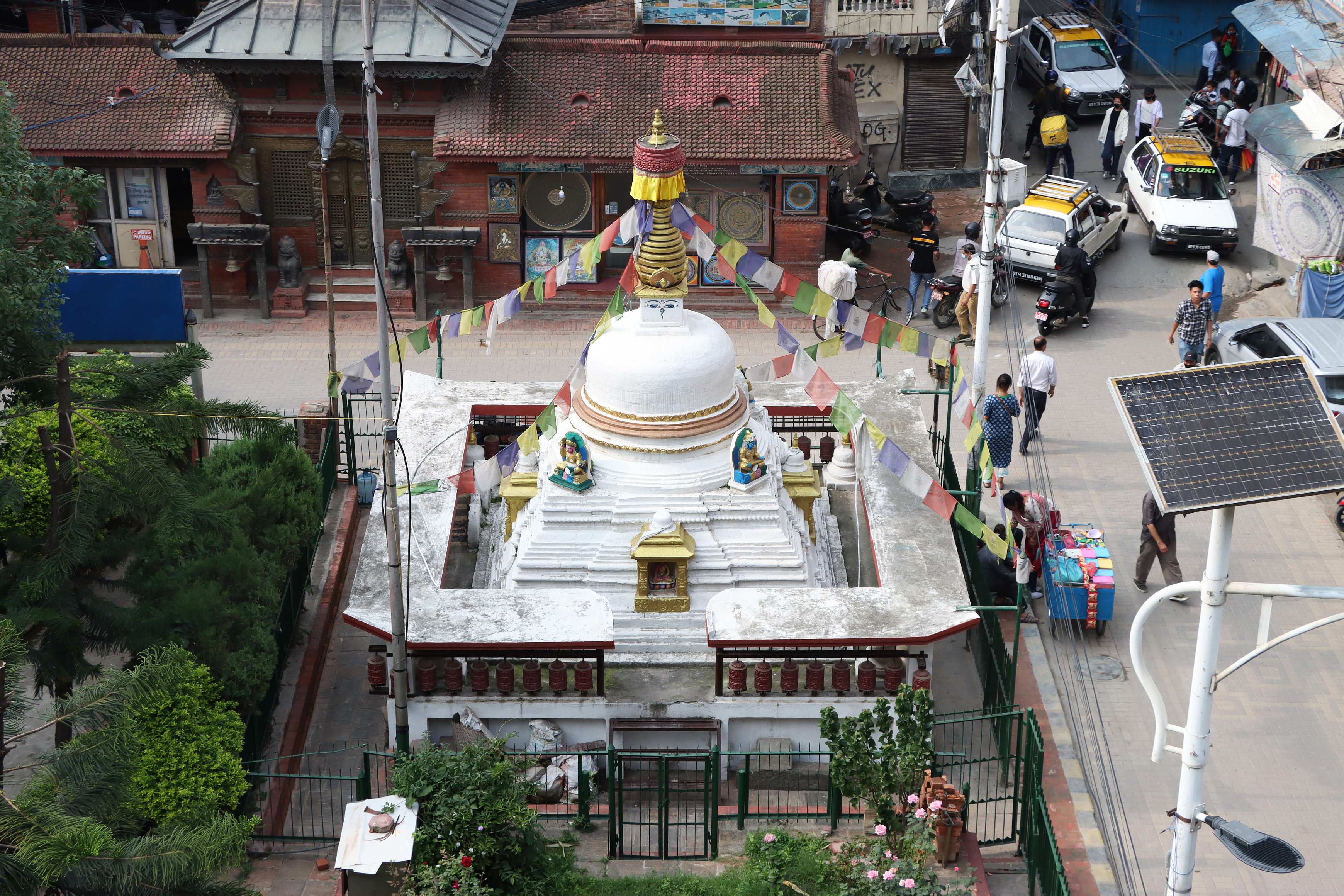Thãhiti Caitya, Kathmandu
Curated by Rajan Khatiwoda and Ravi Shakya

Thãhiti Caitya, situated at the Thãhiti Ṭola of Kathmandu, was constructed in 1432 CE by a person named Megharāja Śilpakāra. This caitya is named so because it was built over a historic waterspout, named Thãhiti. The waterspout is said to be the oldest of Kathmandu (H. Śākya VS 2035, p.7), built before 1207 CE. There are no historical records to shed light on why such a historical waterspout was destroyed and a Caitya was built over it. A popular local legend mentions that water that flowed from the spout, contained particles of gold, which explains its name ‘Suvarṇapraṇālī’, the golden water channel. The legend further mentions that the spout was covered after people started to look for its source to find the way to the gold. Another story mentions that Ratna Malla, son of King Yakṣa Malla, had killed the 12 mahāpātra administrators and his supporters in the course of taking over the city of Kathmandu. His soldiers who were involved in the massacre washed the blood off their hands at Thãhiti. Then onward, the spout was considered unholy and was thus covered by constructing a caitya over it. The caitya contains statues of five (pañca) Buddhas in their respective directions. There are statues of the four great kings (caturmahārāja) on the four corners of the Caitya’s dome. The shield (haliṃpau) above the Caitya’s cube (harmika) contains the symbols of the pañcabuddhas. The top of the Caitya has a spire of thirteen tiers of concentric rings (trayodaśabhuvana) which is placed under the protection of an umbrella (chatra).
For more information about the Thãhiti Caitya and the historic waterspout, Thãhiti, please visit DANAM.
